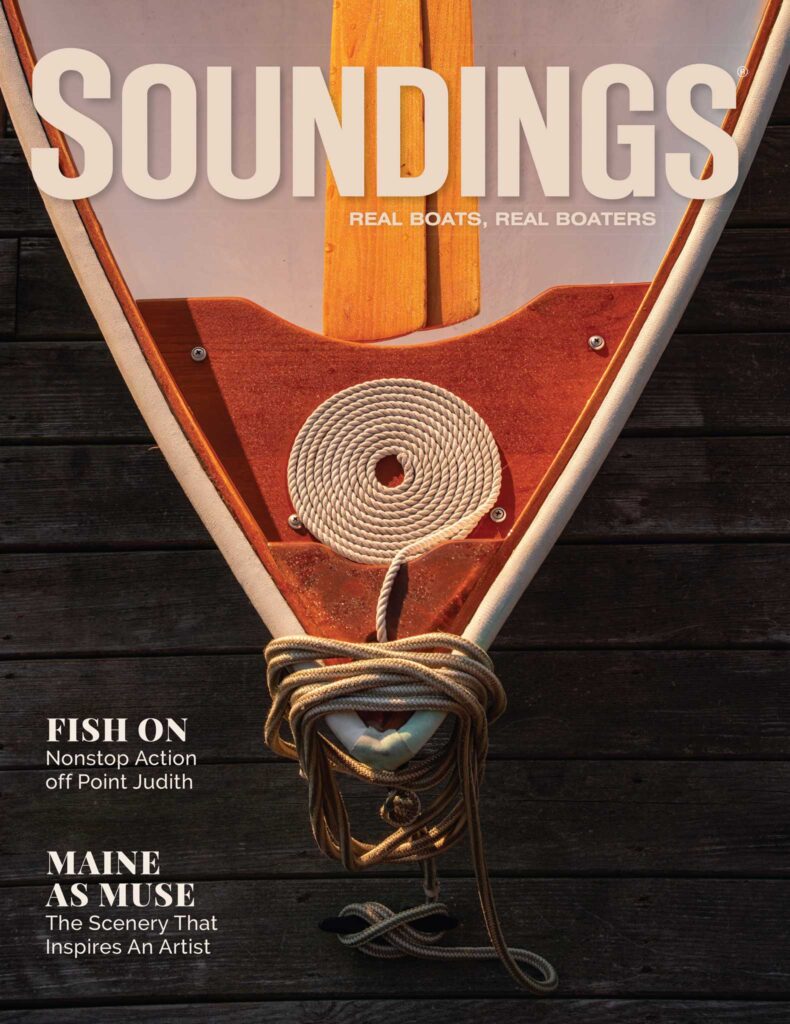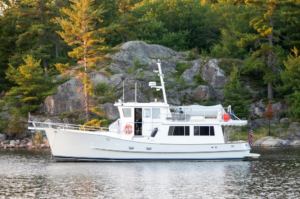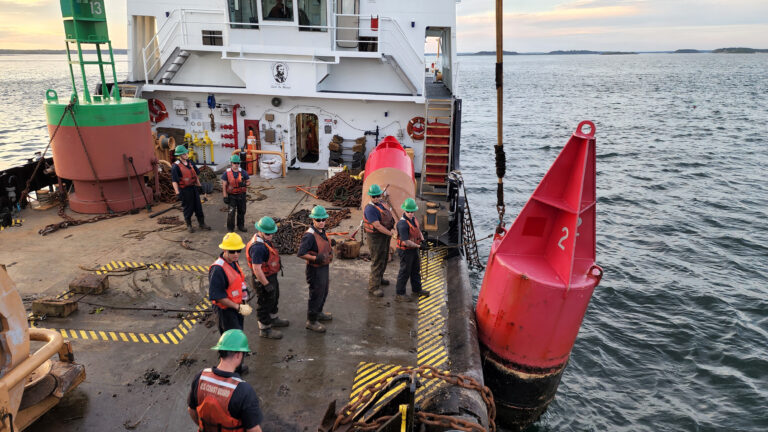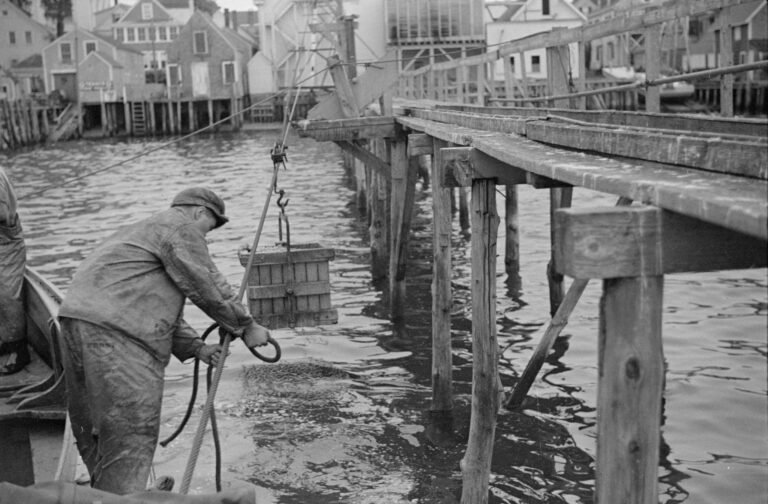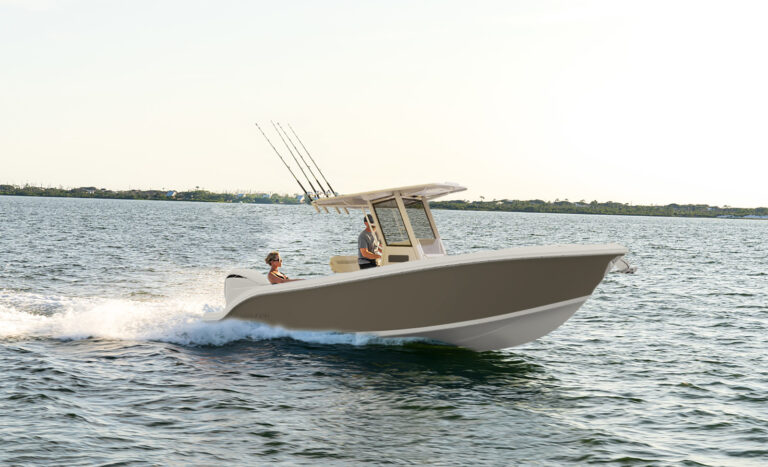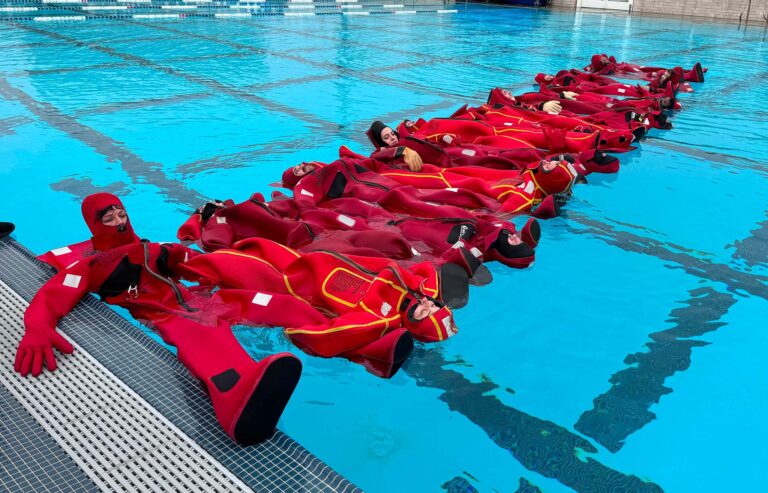
It was easy to spot the Grand Banks 54 in a crowded marina in Old Saybrook, Connecticut. The latest addition to the builder’s Family Series was one of the few new boats on the dock, yet it had telltale marks of a classic Grand Banks, including flawless teak in the cockpit and salty planking lines on the hull. This was Hull No. 1, a prototype that had left Florida the week before en route to Rhode Island. As the boat headed north, it made stops along the way so interested buyers could get a close look at what the company calls an ideal motoryacht for an owner/operator.
“It’s an evolution of our line. It maintains the same level of craftsmanship we’re known for, but it’s modern in performance,” said Ed Roberts, a yacht consultant with Grand Banks who was running the 54 up the East Coast. “Reviews from owners of our
traditional boats will most likely be mixed, since many of them are quite happy to cruise at 10 or 12 knots. They may find that the new underbody is unnecessary. But then you have other people who will be drawn to the 54 because they like the combination of high-quality construction and faster speeds.”
Specifications
LOA: 59’5”
Beam: 17’6”
Draft (w/shafts): 4’0”
Draft (w/IPS): 3’1”
Weight: 47,400 lbs.
Fuel: 898 gals.
Water: 290 gals.
Power: (2) 725-hp Volvo Penta D11s
This 54 is the second Grand Banks to launch since the company’s reorganization under the leadership of Aussie maxi-yacht racer and Palm Beach Motor Yachts founder Mark Richards. The first was the GB 64, which debuted a warped, semi-displacement hull inspired by ocean-taming racers and designed to be safe and comfortable in all sea states. It’s distinguished by the lack of bottom augmentations. There are no running strakes, tunnels or steps to produce drag. There are just smooth surfaces, plus a fine entry forward to split waves and a soft shoulder at the midsection to roll the water away and keep the hull from getting slapped.
The 54 runs on a similar hull, this one powered by a pair of 725-hp Volvo Penta D11s. That propulsion yields a spirited cruise speed of 24 knots and a top end of 28 knots, as well as an economical range of 1,000 nautical miles when the boat is throttled back to 10 knots. These engines—which can be coupled to straight shafts or IPS pod drives—were paired with the boat because they offer good low-end torque and sound levels that are easy on the ears, according to the builder.

The 54 hummed along at a quiet 68 decibels when we left Old Saybrook for a run in a short chop on Long Island Sound. At the helm, Roberts talked about how easy it had been for him and his colleague Tom Zelinsky to operate the boat since they left Florida. Roberts had spent most of the trip driving from the lower helm rather than the flybridge, primarily because it gets noisy on the bridge when you’re scooting along at 22 knots for hours at a time. He also liked the leather-covered bench at the lower helm because it’s comfortable when you’re sitting or standing. And, the oversized electric windows in the salon made it easy for him to communicate with Zelinksky when he was on deck to handle lines and fenders.
Roberts shared construction details about the 54, noting that the hull is built with hand-laid e-glass, while the deck, superstructure and hardtop are manufactured to be more lightweight with resin-infused carbon fiber. With heavier materials below the waterline, the boat has a low center of gravity. That might explain why it felt as if we were running low in the water, slicing through it rather than coming at it from above.

It was easy for our crew to get comfortable in the salon as we powered along. That’s in large part because the boat’s 17’6” beam (wider than Grand Banks models of yesteryear) is coupled with an open layout. Then there was the craftsmanship to take in, including timber joinery in the bulkheads. Also nice was the fixed furniture that’s bonded to the deck and hull to increase the boat’s overall strength. “It’s one integrated system, as opposed to building the pieces separately and screwing them into place,” said Roberts. “Over time, furniture installed that way can develop creaks. There won’t be any of that on this boat. Even the berths are built in. It’s an expensive, labor-intensive process, but it’s a better way to build.”
Hull No. 1 showcased the standard two-stateroom, galley-down layout. (A three-stateroom configuration is available, and it places the galley on the main deck, opposite the helm.) “The galley down layout got a bad rap from other builders because it felt like a dungeon,” said Roberts. “But it’s never been that way on Grand Banks boats. And the 54 is a good example of that. This galley is bright and open, and you don’t feel isolated.”

The layout on the prototype 54 drew a lot of interest on its tour up the eastern seaboard, said Roberts. “Many people we talked with owned boats in the 40-foot range, but they want to do more cruising and need something bigger. Yesterday, I met with the owner of a Hinckley 48. He loves his boat, but he’s ready for a more bona fide cruising platform. He won’t do the Great Loop, but his family will be aboard most weekends, holing up at Cuttyhunk or someplace like that. He’s not as interested in traveling long distances as he is spending time on a boat that offers all of the amenities that make it easy to just relax and be comfortable.”
This article was originally published in the December 2020 issue.

